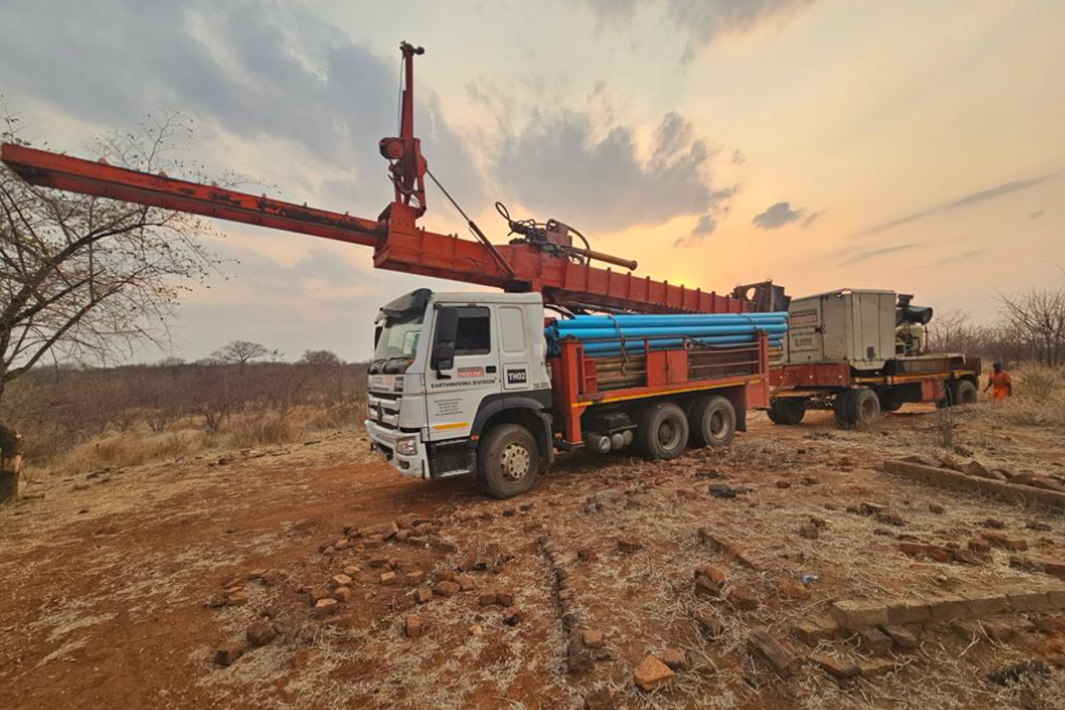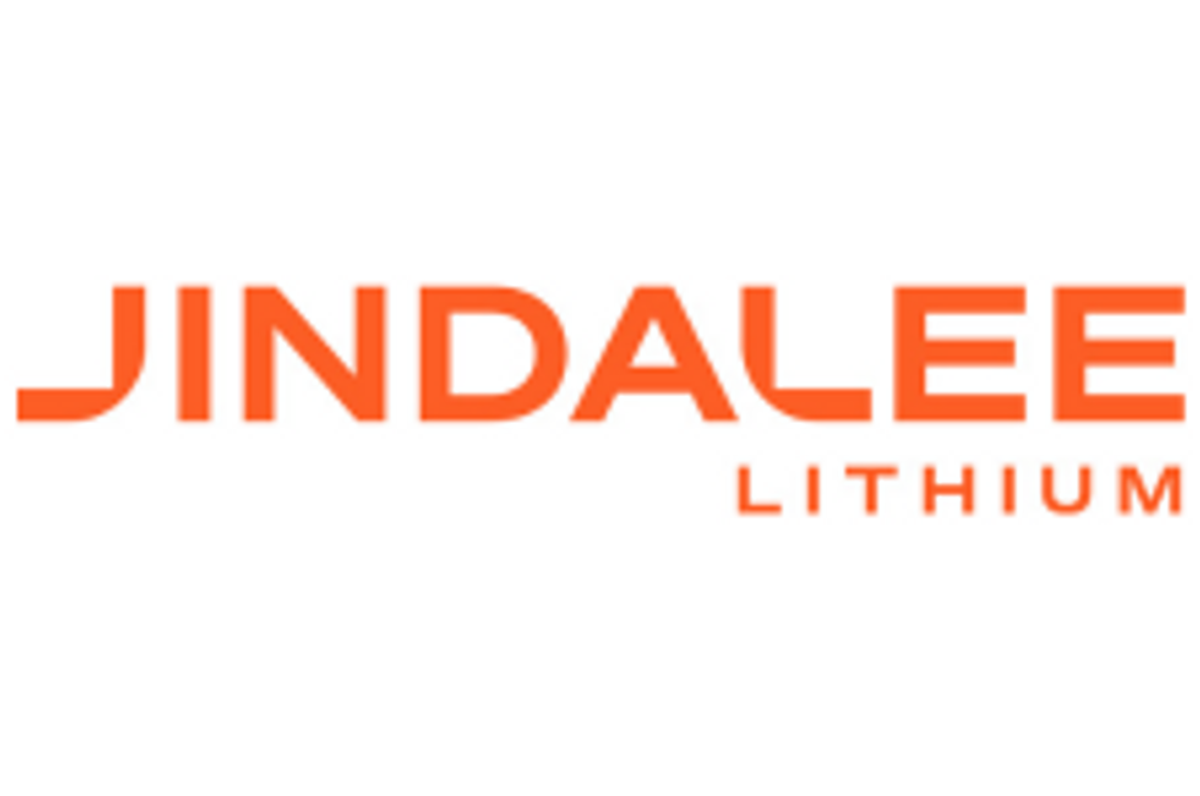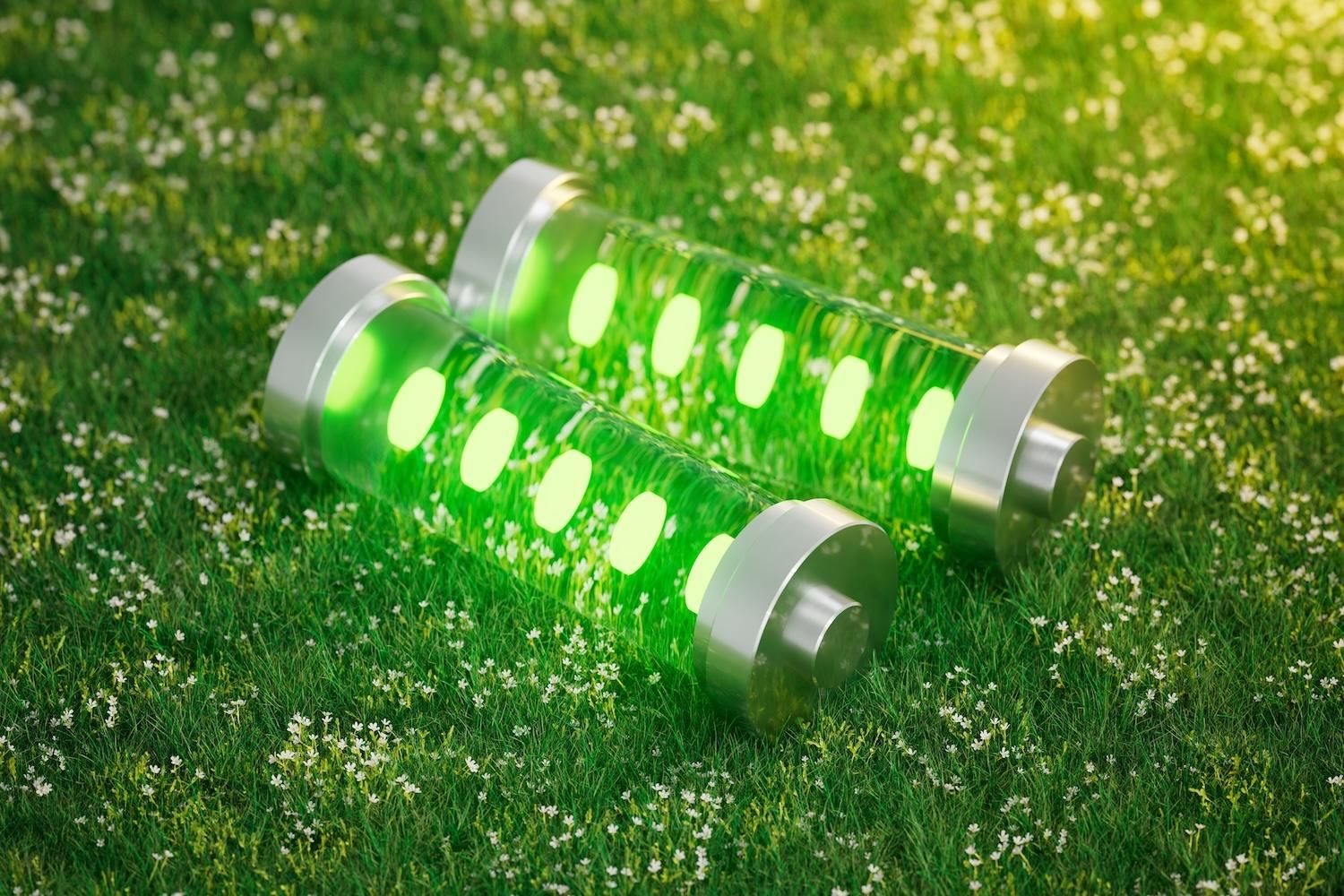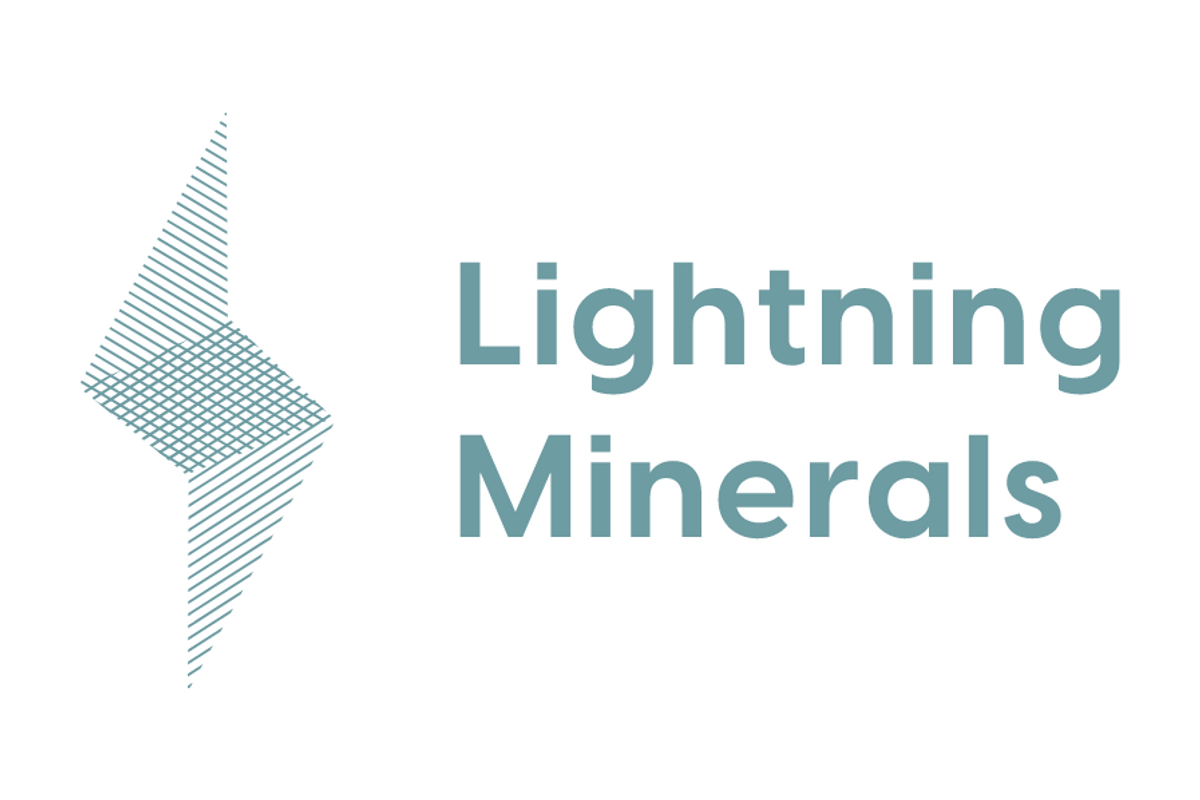
May 13, 2024
Lightning Minerals (“L1M” or “the Company”) is pleased to provide an update for the Dundas South Project and reports assay results for its recent drilling program on tenement E63/2000. The drilling program tested lithium and rubidium targets identified through regional soil exploration work (refer ASX release 9th February). The results demonstrate a continuation of strong lithium and rubidium occurrences (up to 994ppm lithium and 1,834 ppm rubidium at depths of up to 26m.
Highlights
- Positive assays for the Company’s 96 hole, 3,820m Aircore drill campaign1 on tenement E63/2000 have now been received
- Assays have returned elevated lithium values on composite samples with peak results of 994ppm lithium, confirming and increasing the tenor of the previously identified anomalism
- Results highlight three sites of interest which exhibit correlated elevations in lithium and pathfinder elements supporting continued exploration
Strong assay results have continued at the Company’s Dundas South Project within tenement E63/2000 following completion of drilling in February 2024. Results continue to demonstrate the presence of elevated lithium across the project area with strategies now being reviewed to identify the potential source of the anomalous lithium values. The staged approach to exploration across the Company’s Dundas projects continues to build confidence in lithium potential throughout the region.
Lightning Minerals Managing Director Alex Biggs said, “Drilling on E63/2000 has yielded positive results that suggest we are potentially closing in on what might be a source of lithium mineralisation. The staged approach we have taken: geophysics, soil sampling, infill soil sampling and now Aircore drilling have helped us identify the areas of highest importance and we will continue to follow up on these with further targeted drilling. It also demonstrates that this approach to exploration works, while at the same time conserving capital and ensuring maximum value proposition for exploration expenditure.
The Company remains committed to its exploration at its Dundas project and is excited to begin exploration at its newly acquired Caraíbas and Sidrônio projects in Brazil’s Lithium Valley region of Minas Gerais. It is important that we generate optionality in our exploration strategy and we now hold projects in three of the most prospective lithium districts in the world: Minas Gerais, Brazil, Dundas, Western Australia and Quebec, Canada. We remain excited about the Company’s project’s potential and are supportive of the overall lithium thematic”.
Drilling Results for Dundas Tenement E63/2000
During early 2023 Lightning Minerals completed a first pass reconnaissance soil geochemistry program consisting of 1,391 soil samples at its Dundas South Project. Results within tenements E63/2000 and E63/1993 defined a broad lithium in-soil anomaly over an approximate 2.4km x 1.0km area, including a peak result of 218ppm lithium (Figure 1). Infill sampling was then completed to further define anomalism and to delineate drill targets through the shallow regolith and alluvial cover present in the area. The positive results of the infill program were sufficient to support the continuation of exploration activities through Aircore drilling.
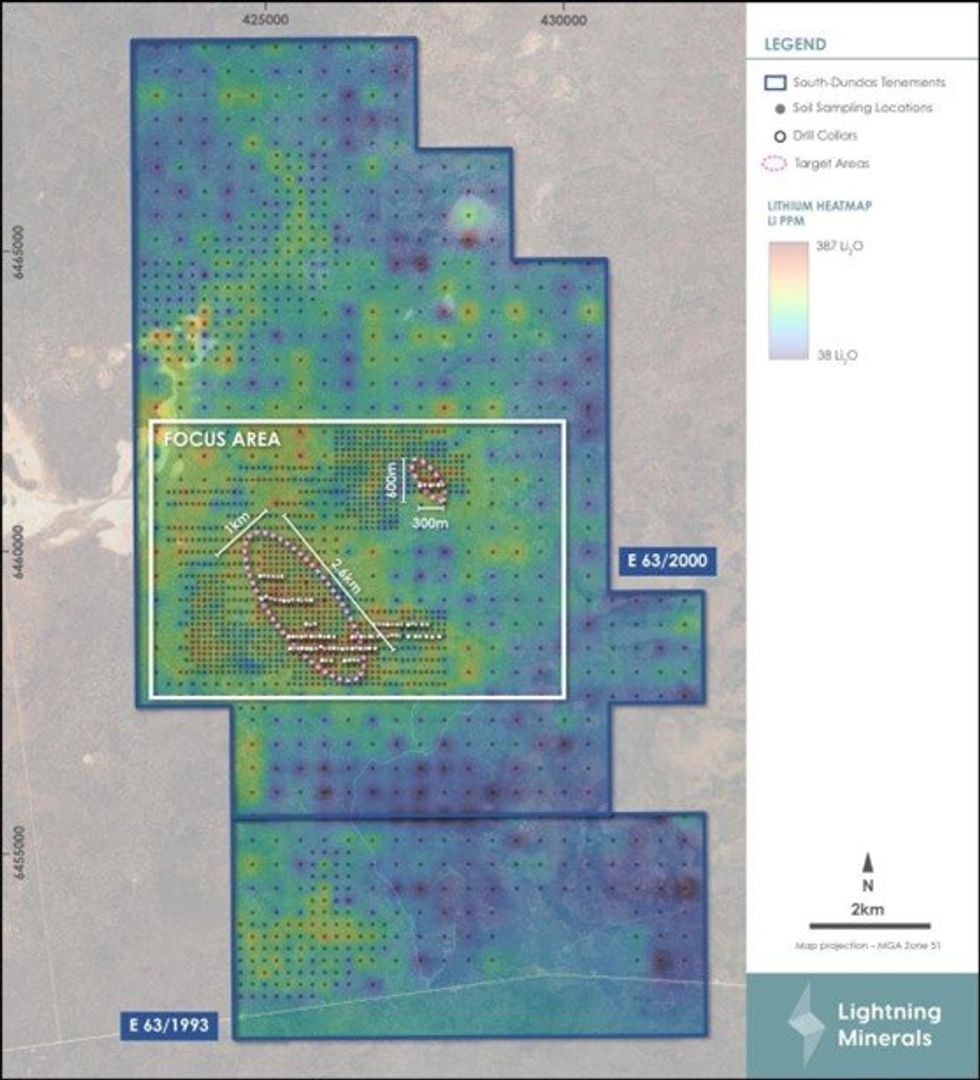
The maiden drill program within E63/2000 was then completed in February 2024 and assays have now been received for all samples submitted for laboratory analysis. Results show three sites of interest, these exhibit broadly correlated elevations in pathfinder elements within highly weathered saprolites. Two of the three sites (Drill Traverse 4 and 6, Figure 2) are located on the eastern extents of east west orientated drill lines and will require follow up exploration to continue vectoring toward any potential lithium mineral system that may be responsible for the elevated results.
Samples were collected from all holes using a 4m composite sampling technique from surface. The samples were then submitted to Nagrom laboratories for a full suite of exploration stage low level elemental analysis. Lithological logging via suitably qualified contract geologists reported a range of end of hole (EOH) rock types including mafic volcanics, granites, and metasediments, with some holes ending at hard undifferentiated saprock/saprolite boundaries.
Click here for the full ASX Release
This article includes content from Lightning Minerals, licensed for the purpose of publishing on Investing News Australia. This article does not constitute financial product advice. It is your responsibility to perform proper due diligence before acting upon any information provided here. Please refer to our full disclaimer here.
The Conversation (0)
11 December
Mining the Gap: 5 Forces Shaping North America’s Lithium Supply Chain
A convergence of industry investments, government initiatives and a shifting global trade dynamic is creating an environment ripe for the development of a North American battery supply chain, with lithium playing a leading role. These trends are reshaping the region’s industrial base and opening... Keep Reading...
10 December
Rock Bottom: Strategic Window for Ground-level Lithium Investment
When lithium prices hit bottom, savvy investors know that’s exactly where the next big discovery begins — literally. Beneath the surface of global markets and remote exploration grounds, new opportunities are forming in the wake of a sharp price reset and renewed geopolitical urgency.Recent... Keep Reading...
10 December
Liontown Resources Pens Lithium Offtake Agreement with China's Canmax
Liontown Resources (ASX:LTR,OTC Pink:LINRF) has executed a binding offtake agreement with Chinese conglomerate Canmax Technologies (SZSE:300390) as part of its strategy to diversify its customer base.“Listed on the Shenzhen Stock Exchange, Canmax is one of the world’s leading manufacturers of... Keep Reading...
08 December
Trading Halt
Jindalee Lithium (JLL:AU) has announced Trading HaltDownload the PDF here. Keep Reading...
05 December
Livium Receives A$663k in RsD Tax Incentive Rebates for VSPC
Livium Ltd (ASX: LIT) (“Livium” or the “Company”) advises that it has received A$663,000 in research and development ("R&D") tax incentive rebates from the Australian Tax Office for the 2025 financial year ("FY25"), relating to its wholly owned subsidiary VSPC Pty Limited ("VSPC"). The rebate... Keep Reading...
01 December
Why SQM Says Social Dialogue is Key to Sustainable Lithium
As scrutiny continues to intensify across the battery metals supply chain, the conversation around sustainability has moved far beyond carbon footprints. At this year’s Benchmark Week, Stefan Debruyne, director of external affairs at Sociedad Quimica y Minera de Chile (SQM) (NYSE:SQM), made that... Keep Reading...
Latest News
Interactive Chart
Latest Press Releases
Related News
TOP STOCKS
American Battery4.030.24
Aion Therapeutic0.10-0.01
Cybin Corp2.140.00

